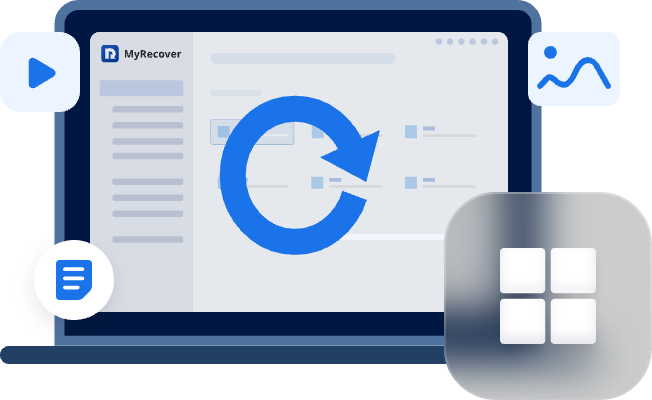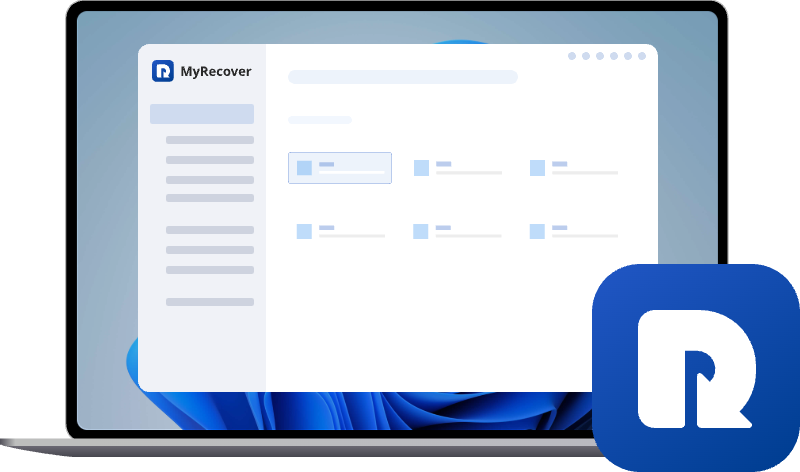How to Recover Previous Version of Excel File After Saving in Windows 10
If you accidentally saved over an important Excel file in Windows 10, Don’t panic—you may still recover previous version of excel file after saving! This step-by-step guide walks you through several reliable methods to recover original excel file after save.
Can I Recover an Excel File I Accidentally Saved Over?
“I was working late on his quarterly budget report in Excel. After hours of editing, I accidentally saved over the original file with incorrect data. All the accurate figures were gone, and I had no backup. My mind started racing — Did I just ruin days of work? Is there any way to get it back?How can I recover a previous version of an Excel file after saving?Any helps will be greatly appreciated!”
Microsoft Excel is one of the most widely used tools for data analysis, financial reporting, budgeting, and more. Whether you're managing personal finances or corporate accounts, Excel's versatility makes it an essential part of daily work for millions of users. But with that reliance comes risk—especially when it comes to overwriting important files.
So, can you recover an Excel file you accidentally saved over? Yes, in many cases, you can. Excel and Windows both offer features that might help you restore a previous version of your file.
How to Recover Previous Version of Excel File after Saving?
Depending on your system settings and how Excel is configured, you may be able to recover original excel file after save using the following methods. Each method depends on the environment you're working in and whether certain features were active at the time. Now, let’s explore them one by one until you successfully recover previous version of excel file that was saved over.
Method 1. Undo the Changes With "Ctrl+Z"
When you accidentally overwrite an Excel file, the first and simplest method is to try undoing the changes or retrieving earlier versions from within the Excel interface — but timing is critical.If the file is still open and you just saved over it, try using the Undo button (Ctrl + Z)to reverse your last actions. This only works as long as you haven't closed the file — once it's closed, the Undo history is lost.
Method 2. Excel Built-in "Version history"
If you’ve saved over your Excel file and closed it, don’t panic. Excel’s built-in "Version History" can be a lifesaver.
Step 1. Open the file in Excel (desktop or online).
Step 2. Click "File >Version History".
Step 3. A list of timestamped versions will appear on the left panel and you can open any version to preview it.
Step 5. Once you located the target file, select "Restore" to recover any previously saved versions.
Method 3. Excel Built-in "AutoSave"
Excel’s AutoSave feature is designed to protect your work even when mistakes happen. If you accidentally overwrite or close a file without saving, these built-in tools might help you recover your data.
Step 1. Open the Excel file you were working on.
Step 2. Navigate to "File > Info".
Step 3. Look under Manage Workbook, and locate the file marked as (when I closed without saving).
Step 4. At the top of that file, click "Restore"to recover it and replace the previously saved version.
Method 4. Windows Built-in "File History"
Windows File History is a built-in backup feature that automatically saves versions of your files over time, allowing you to restore them if they're accidentally modified, deleted, or corrupted. To retrieve previous versions of your Excel files, check out the following steps:
- Prerequisites:✎...
- File History must be set up and turned on before the file was modified
-
The feature only works if the file was saved in a folder included in your File History backup
Step 1. Navigate to the folder where your Excel file was originally saved. Right-click on the file (or its parent folder if the file was deleted)
Step 2. Select "Restore previous versions" from the context menu. This will show you a list of available versions from different points in time.
Step 3. Double-click any version to preview its contents. Select the version you want to recover (look at date/time stamps) and click on:
- Restore: Replaces the current version with the selected version.
- Restore To: Saves the previous version to a different location.
- Open: Lets you view the file before deciding to restore.
Step 4. If restoring to original location, confirm you want to replace the current file.
Method 5. Cloud Drive "Version History"
Cloud storage services like OneDrive, Google Drive, and Dropbox offer version history features that automatically save file versions when changes are made, enabling you to revert to a previous state if needed.Next we will show you how to recover previous version of excel file that was saved over through OneDrive cloud.
Step 1. AccessOneDrive via web or desktop app. Locate the Excel file you want to restore.
Step 2. Right-click the fileand select "Version history".
Step 3. A list of saved versions with timestamps will appear. Preview the versions to identify the correct one.
Step 4. Click "Restore" and replace the current file with the selected version.
Bonus Tip: Recover Deleted Excel
If you've permanently deleted an Excel file and can't restore it through File History or Version History, MyRecover provides a professional solution for file recovery. This advanced recovery tool goes beyond basic file restoration with these powerful capabilities:
👉Extensive Format Support: Recovers 1000+ file types including Excel (.xlsx/.xls), Word, PDF, PowerPoint, media files (MP4/MP3), emails (EML), and more
👉Universal Recovery Scenarios: Effectively handles data loss fromsystem crashes or unexpected shutdowns, emptied Recycle Bin, accidental disk formatting, file system corruption,power failures during file operations. etc
👉Reliable Retrieval: Advanced algorithms ensure high recovery success rates even in complex data loss situations.
👉Preview Before Recovery: Verify file integrity before restoring.
Step 1. Install MyRecoveron your Windows computer.
Step 2. Launch MyRecover and select the drive where your Excel file was stored. Click "Scan".
Step 3. "Quick Scan" will be performed first for recently deleted items. If necessary, you can choose "Deep Scan".
Step 4: Select the deleted Excel file (filter by .xlsx/.xls format) and preview it if you want.
Step 5. Tick target excels, click "Recover" and choose a safe save location.
When the recovery process is done, you can check the recovered excel in the new path.
Conclusion
Accidentally saving over an Excel file can be frustrating, but in most cases, your data isn’t lost forever. Whether through Excel’s built-in features (Version History, AutoSave), Windows File History, or cloud backups (OneDrive, Google Drive), you have multiple ways to recover previous version of excel file after saving.
For more severe cases—like permanent deletion or corrupted files—MyRecover offers a reliable solution with deep scanning and broad file format support. To recover files on unlimited device with better support, you can try Technician edition.


